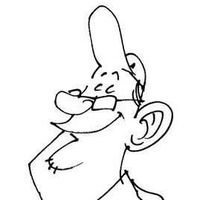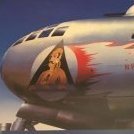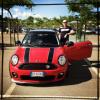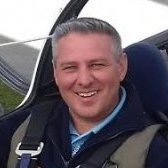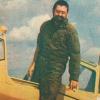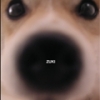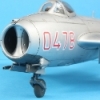Search the Community
Showing results for tags 'Vietnam'.
-
Hi everybody; after a couple of propeller builds, here I am back to a jet, and in 1/72! A few words to introduce this project: almost one year ago, I started the build of a Hasegawa 1/72 F-4 J Phantom II, this one: It was my first serious venture in 1/72 scale, and was a lot of fun. I learnt a lot from all the people who followed that WIP, and one in particular is Gene K; former USAF F4 pilot, he has been very helpful both in terms of technical info on the AC and in terms of modelling tips. Long story short, we became friends an I offered him, as a sort of way to thank him for the great help and as a tribute to his career, to build a model of one of the F4-s he has actually flown. He suggested the subject of this build, and not only that: he has actually donated me the two kits I'll be using for this, plus a lot of extras. Basically, following Gene's guidance, I'm going to modify an F-4 J Hase kit to become an F-4C, with the addition of parts coming from the greatly detailed MONOGRAM kit and a few aftermarkets (and some scratch building, of course ). This thread is going to be co-hosted together with Gene, and we'll go into more details in the next few posts. For now, what I have is: a completely cleared workbench (that is something totally new for me ) the kits Hasegawa parts to be added/modified: Nose sensor Stabs Seamless intakes, Gene's patented method Monogram parts: Tanks, pilons, gunpod etc Speed brakes and arrest hook Cockpit (amazing detail for a 1/72 injected kit!!!) Pilots!! One half fuselage has already been "treated" by Gene prior to sending me the kits, as an example to follow. He has also noted indications on the kit plastic Aftermarkets: Specific decals Stencils; these have been donated by another friend, Silvano (Phantom61 here on BM) AC Profile and most important thing: Now Gene will go into more detail about the project and the aircraft. Enjoy! Ciao
-
This is my conversion of Academy's 1/72 North American OV-10D to the earlier YOV-10D Night Observation Gunship System (NOGS). 2 OV-10A's, 152660 and 155395 (note there is one of many typos in the Squadron Gunships book with lists 155660 in one place and 152660 in others). These had a lengthened nose with an FLIR turret and the sponsons removed and an M-197 20mm Gatling gun turret added. There is a MPC kit purporting to be of the YOV-10D but it is inaccurate as far as the M-197 and FLIR turrets and is pretty crude so I set it aside and used the Academy kit instead. I did use the M-197 mount from the MPC kit. To start I have to say that the Academy kit was a pleasure to to build with mostly good fit and finish. Removing the sponsons was fairly easy. I fabricated the m-197 turret from some 9mm brass tube and Master Models' brass 3 barrel M-197 set. The Academy FLIR turret is the later Texas Instruments one so I made the earlier one using the tail end of a multiple rocket launcher. Also note that the Academy kit uses the later type engine exhaust but includes the correct early type too. Other then all that it is pretty much OOB 😀 except for some Eduard seatbelts. I was going to use the MPC decals which were for 152660 but the Academy kit came with decals for 155395 which they say was used in Desert Storm. The only issue was that the type decal said OV-1D instead of YOV-10D but, the MPC decals had the same error so I decided to ignore it. The camelflage was roughly the same 3 color gray scheme used on the AP-2H. So here it is: Next up is the Fantastic Plastic (Anigrand) P4M. This will be the start of my blue period since the next 4 kits (P4M, AF-2S, TBM-3S and P2V-5) will all be painted Dark Sea Blue. Enjoy
- 13 replies
-
- 22
-

-
-
Here is my completed 1/72 F-4J Phantom. It is the Revell kit which re-srcribed and riveted. It was a fun kit to build, the details of which can be seen at the link below.
- 23 replies
-
- 62
-

-
- 1/72
- F4 Phantom
-
(and 1 more)
Tagged with:
-
In between my new armored obsession and a big diorama project I like to return to aircraft. I have always wanted to do something from the Vietnam war era. Also I don't have any props in my collection so this plane fits the bill. I havent decided on a decal set but I would like to do a Sqn that is not well known. So a behind the scene project is looking at photos and finding decals. Love the scene in "Flight of the intruder" when William Dafoe calls in "Sandy" the loitering Skyraider. Anyways should be fun looking forward to the final coat. I am goint to add expansion packs and detail kits but the kit seems pretty good. Ill get into the kit here tomorrow and post some more on the paints and start of construction. Oct 15th update Layed out engine parts there are two options one with the cowl doors open and one closed not sure the purpose of the doors but when they are closed you cannot see the engin details. looking at several engine photos a well seasoned engine has several types of metals predominant is the main cast with a almost beryllium or off gold hue. I found an almost perfect match in the Tamiya spray cans I just decanted some and transfered it into my airbrush. After spraying a wash to replicate the burnt hydraulic fluid and oils the photo is a bit orange but the final finish looks very close to the photo. I just need to add some detail painting of the other metal surfaces. Tomorrow's plan to start on the cockpit I realised that the expansion pack for the cockpit has a Navy seat I do have a Airforce seat ready to go.
-
Hi all, been a while since I made a proper post on here. My newest project will be an M113, with a main feature being the two Eduard sets I will be using on it. It's been a while since I got my teeth into a build like this, so I'm looking forward to it. This is my progress so far. Since the base kit hasn't arrived yet, I've been working on the photo-etch assemblies that stand on their own like gun shields and radios. So far so good, although the inside of the gun shields have a few imperfections. I'm using Gorilla gel glue as usual, and there are a few blotches where I used too much glue. We'll see how they look after a primer coat, I suppose, but that side will be covered by the guns/ammo anyway. Until the base kit arrives, this is pretty much my progress for now.
-
UH-1N Twin Huey (KH80158) 1:48 Kitty Hawk The original UH-1 is probably one of the most well-known shapes when it comes to rotary-winged aircraft, or helicopters as us civilians call them. The Twin Huey was initially developed to meet a requirement expressed by the Canadians, which saw the Bell 205 stretched to accommodate an additional engine and increased load carrying capacity. After the initial purchase by Canada, there was some political wrangling regarding the manufacturing location of the engines, but eventually around 300 airframes were procured and given the US Military designation UH-1N. It saw service in Vietnam, where its one-engine flight capability gave it the advantage over the single-engined Huey, which didn't fare too well without engines in a combat zone. The US Marines added an electronic stability system to a number of their airframes, removing the stability bar from above the main rotor, which is something to look out for if you're planning on building a particular aircraft. From the 1970s onward they have been in continuous service with incremental upgrades, with USMC remanufactured 1Ns being renamed 1Y and given the aggressive name, Venom, but also being referred to in service as Yankees. There are simplified civilian versions of the 1N, which is known as the Bell 212, and quite a long list of military operators both past and present, including the Argentinians during the Falklands War. The Kit This is a revision and reboxing of the UH-1Y Venom we reviewed here in 2015, and the earlier (but later release) single-engined UH-1D here in 2017. While it arguably shares more heritage with the later Venom, the sprue layout is completely different from the Venom, but includes two of the newer sprues from the UH-1D boxing. The rest are new tool, including the clear parts, the Photo-Etch (PE) sheet and the decal sheet, totalling four sprues in a pale grey styrene, one in clear, a PE sheet, a set of three resin figures in a separate vacformed container, and combined instruction and colour painting guide. The clear parts are also safely cocooned in a flat box with a bag protecting the parts from chaffing during transit and storage. Looking over the sprues there is a lot of really nice detail on the parts, with judicious use of slide-moulding to achieve fine detail in areas such as the underside of the fuselage, nose, rotor head and some hollow parts. Construction begins with the rotor head for a change, which includes the stabilising bar and linkage that was sometimes removed from USMC airframes. The two blades have finely rendered stacked plates at their root, and have a slight droop moulded-in, which are composite so shouldn't droop as can be seen from numerous pictures. The best way of correcting this is heating the plastic in hot water and bending them back straight, then quenching them with cold water. Not a major impediment to progress, but a bit of a boo-boo. The tail boom is next with optional PE slime-lights, the two blade tail rotor and the fins on each side, along with a skid and a pair of sensors at the bottom of the main fin. Two PE mesh grilles are included for the fin root, which will need bending to suit the shape of the recess into which they fit. The crew cab floor is next, and is fitted with a full set of controls for the flight crew with cyclic and collective sticks for each pilot, separated by a central console, and two perforated dividers in the nose, which supports the upper section and allows the detailed instrument panel and coaming to be set in position. The pilot seats are made up from a main chassis, with additional cushion fitted to the back, and the framework added to the back and underside. A pair of PE belts are looped over the back of the seats out of the way, then they are glued into their rails on the floor, and a boxed in section and rear bulkhead are added at the rear, ready for the passenger seats that comprise six positions in a line across the cab, and two pairs either side of the aft section. Each seat is sat on a tubular frame, and has a pair of PE lap belts draped over them, and here annealing them in a flame will help make them more malleable to improve the drape. Attention then shifts to the engine compartment, with the aft end of a pair of Pratt & Whitney T400 turboshafts pushed through holes in the front of the engine compartment, adding some of the detail you will find in there (a canvas for the super-detailer), and the flattened exhausts sitting on top. Another bulkhead attaches to the fronts of the engines on a pair of lugs, with the intake phase added to the other side of the first bulkhead. The cockpit and engine assemblies are then married up and sandwiched between the two fuselage halves after adding the winch bay to the inside. My review sample had received a bit of damage to the thin upper door edge on the port side, but it was easy enough to fix with a bit of glue and some patience as you can see below, but check your example just in case. The forward edges of the side doors are bulked out with additional parts, then the passenger cab's roof, which consists of inner and outer skin, is added and finished off with extra detail at the front, plus the beginnings of the rotor "hump" and intakes on the top. At the rear the long faceted exhaust trunks are glued to the rear of the curved section, with a radiator slung underneath. The exhausts are made up from two parts split top and bottom, and with careful fitting, you can minimise the seam, then take a view on whether it needs further work. The engine compartment is then boxed in with the top cowling, side cowling sections, and smaller PE access panels that you can choose to leave open if you're proud of your work on the engine bays. Boxing in of the nose is next, with the solid upper section, clear lower windows, and the underside panel with the mount for the FLIR turret moulded in. Now we get to play with the resin figures, which are really rather nicely moulded. The two pilots are fitted into their seats after painting, one with his hands on the controls, the other operating the overhead controls. There is another figure included depicting the door gunner, but his location isn't shown although it's pretty clear he's intended to be in a door… with a gun. The crew cab doors are made up from inner and outer panels, plus the clear window in the top section. The smaller front side door is also made up and installed at this point, then the main canopy is fitted out with the overhead console that pilot two is fiddling with, along with a fire extinguisher for…. Fires. Once the cab is complete, the skids are made up and installed under the fuselage in their recesses, adding a number of PE parts for detail along the way. With the fuselage on its back, the FLIR turret, antennae and cable-cutter are put in place all along the underside, with more PE parts such as tie-down lugs added along the way. A similar festooning of the top surface is carried out, including sensors, wipers and grab handles etc. Now for the fun part, the weapons installation, although they're only applicable to two of the decal options, which may colour your decision if you like things that go "BANG!" like I do. There are two installations, one on each side, each attached to the fuselage via a curved bracket that is topped with a gun mount for either a .50cal Browning, or the optional multi-barrel Vulcan mini-gun. A grab bar is attached either side of the mounts, and underneath is suspended one of a choice of rocket packs, holding 19 x Hydra 70 rockets in the wider tube, or 6 of the more modern Advanced Precision Kill Weapon System (APKWS) in the narrow tube. Each pod has a two-part body, and two end caps with rocket and exhaust details moulded in. If you're using the weapons, you leave the side doors back at base, but if you're depicting one of the less combative options, you'll need to put two glazing panels into each one, then fit them in place open, closed, or anywhere in between. All that's left to do after that is add the main rotor assembly from the top, and the tail butts up to the rear of the fuselage. Now for some paint. Markings There are six options in the box, only two of which are geared for war. There is a good selection of colourful options and we're not just limited to shades of grey, which is nice. From the box you can build one of the following: US Navy UH-1N #158278 US Navy Rescue UH-1N #158272 USMC UH-1N #158549 USAF UH-1N #96640 USAF UH-1N #96645 USMC UH-1N #160178 A quick Google search showed #158549 to be fitted with the stabilising bar as shown in the instructions, but sadly, #160178 was lost in an accident along with her crew when it collided with another aircraft whilst using Night Vision Goggles (NVG) on exercise in Oman in the early 90s, with no pictures readily available. The decals are printed closely together on a medium sized sheet and appear in good register and well-printed. There are a few typos in the smaller stencil decals that probably won't notice, but the "Danger Jet Intake" decals have a typo that may well gain some attention, as it says "intke". It's an oopsie we could have done without, and there's no easy way to fix it. The letters M and P on the tail of the first Marine airframe look like they've got a print issue as they're two-toned, but that's correct, due to the darker grey on the leading edge of the tail. The carrier film is printed closely to the edge of the printing, but a few have a slight lip on the upper edge that may be peculiar to my sample. Conclusion Another Huey from Kitty Hawk, and as usual with their kits, as long as you pay attention, test fit and adjust where necessary, it should build into a nice replica of this important and well-loved helo. I'm currently torn between the attractive red/white rescue bird and one of the Marine aircraft that are loaded for bear. Highly recommended. Review sample courtesy of and available soon from major hobby shops
-
Just finished this one today (2 in one day...!!!). The old and bold Trumpeter 1/72 IL-28. These kits can be picked up for peanuts. Fit is a bit off in places but with the usual effort scrubs up pretty well. Do not follow the instructions for the pilots cockpit as the seat would be way too low. I wanted something to go with my Vietnam collection so used spare decals from the stash rather than the box options. Airbrushed using Tamiya paints (which I totally adore for airbrush work). Weathered using a Flory dark wash. EZ Line used for the radio wire. Very pleased with the way it has turned out and has decent presence on the shelf. Here we go with the photos: Cheers all, Phil
- 27 replies
-
- 56
-

-

-
Cessna L-19/O-1 Bird Dog (48035) 1:48 Iliad Decals This well-known Observation aircraft from civilian manufacturer Cessna had a lengthy service record and was well-used during Vietnam to obtain and transmit intelligence on the enemy back to the US troops for targeting of bombardment and tactical/strategic use, often whilst under fire. It was also popular with other operators and continues in private service today. This new decal set from Iliad in Canada depicts a variety of airframes in the service of different operators on an A5 sheet of decal paper. There are six decal options included on the sheet with side and top profiles printed on the instructions along with captions and arrowed areas that give additional details to help you make your model more accurate. The underwing decals are shown as ghost images on the overhead profiles which both saves space and paper, which is always a good thing. From the sheet you can decal any of the following: O-1A Bird Dog 14856 of the Kansas Army National Guard, 1968 L-19 751 of the Pakistan Army's 11th Army Aviation Squadron L-19 1002 South Korean Navy 1960s O-1A 14617 US Army Reserve L-19 0-12744 203rd Recon Airplane Company Hawkeyes, An Khe, South Vietnam 1968 L-19 H-1001 Hoantai, predecessor to Japan's Self-Defence Force The decals are printed on a pale blue paper in good registration, sharpness and colour density, with a thin gloss carrier film cut close to the printed areas. There are some large areas of carrier film between the lettering by necessity, but due to the extremely thin nature of the film it should disappear, especially if you add extra clear gloss after application. Highly recommended. Review sample courtesy of
-
Hi modellers, few days ago I’ve started a new entry to my Vietnam War aircraft collection. It was the De Havilland RU-6A Beaver in VNAF colors. In the early 1960s, the Electronics Warfare Laboratory developed airborne radio direction finding (ARDF) electronic gear and installed it in three de Havilland U-6A Beavers, re-designating them RU-6As. Apparently no special code names were applied to those aircraft at the time. Assigned to the Vietnam Flight Detachment of the 3rd Radio Research Unit in March 1962, those three aircraft became the first Army reconnaissance airplanes in Vietnam. Time later a group of ARDF Beavers went to the Mekong Delta in 1964. Sometime before 1966, three RU-6A aircraft equipped with standard U.S. Army ARDF equipment were given to the South Vietnamese Air Force. Those systems worked so well that more Beavers and U-8Ds were converted under the ‘R’ version, incorporating AN/ARD-15 surveillance equipment for Vietnam service. Example 51-16862 /mM available on decal sheet was delivered to US Army on January 1953 as L-20A and re-designated U-6A in 1962. Later converted to RU-6A. Then this aircraft was given to VNAF, served with 33rd TW (tail code mM), 716th Rec. Sqn. AF. It had the earlier style airborne direction finding equipment (with Collins R-390 radios) instead the newer AN/ARD-15 system that the U.S. used for their RU-6As. (photo credit: http://www.dhc-2.com) Kit is the rather basic Hobbycraft in 1/48 scale but it is a good point to start, a sort of blank canvas… As my usual, I love to show my models fully opened, so that first step was to separate front/back doors from the clear fuselage and replace them by styrene. According a lot of pictures taken in http://www.dhc-2.com website, I was quite sure that cockpit floor was wrong. Much better to replace it by styrene too… Instrumental panel next to come… (photo credit: http://www.dhc-2.com) Ciao, Alex Rome
-
This is the last member of ‘FAC trilogy’ composed of previous O-1E and O-2A shown here in the past. It’s the most unusual and less known of three, the ‘pre production’ Lockheed YO-3A Quiet Star. YO-3A was a two-seat nearly silent observation and reconnaissance aircraft designed by the Lockheed Missile and Space Division for use by the US Army at night over South Vietnam during the Vietnam War. Its purpose was to detect enemy activity and direct artillery fire and helicopter gunship strikes upon them. The Observer sat in the front of the cockpit and the aircraft was fitted with a downward looking Night Vision Aerial Periscope (NVAP), infra-red illuminator and a laser target designator to complete its night mission. Unarmed, silence was the only protection it carried into conflict. The bubble canopy was large to enable all round observation capability and it is hard not to notice those long, thin wings (17.3 metre wingspan) which show its glider heritage. To keep the aircraft super quiet it was fitted with a special muffled 210-horsepower Continental Model IO-360D engine that powered a slow propeller to eliminate the typical sound generated by a spinning aircraft propeller (originally it was fitted with a six bladed variable pitch propeller but in 1971 this was changed to a 3 bladed laminated constant speed wooden propeller that was just as quiet but also more efficient at higher speeds). Only eleven were built in 1969 and nine of those were operated from the summer of 1970 to 1972 in South Vietnam. In an attest to the silent design of the aircraft, none were ever shot down or even hit by enemy fire during its time of operation in the conflict and it was proven to be very successful in its role. The hard-to-find second hand kit by Legato in 1:48 was found in Slovakia last Spring. It’s a full resin kit with vacuum canopy and an useful photo etched sheet. It’s a medium quality kit (dated 2005) with poor interior details, I suppose due to lack of images at time… Camo color indications are of pure fantasy as well. Interiors are from scratch, except a revisited floor. WiP pictures taken during these ten months of working were too many to show all you here, so that I decided to get a (large) selection. Model, pilot, extinguisher and plates are painted by Testors/Humbrol enamels. The real 69-18007 is now stored at Western Museum of Flight (California), waiting for restoration. Thanks to Museum’s press office and Quiet Aircraft Association for essential help. Work started June 2018, ended early March 2019. Man hours worked h.378. Cheers, Alessandro Rome YO-3A 69-18007 at Phu Bai (Vietnam), 1970 (photo credit http://www.yo-3a.com/ ) Cockpit, port side Dry fitting - starboard side **********************************************************************************************************************************+
- 32 replies
-
- 56
-

-

-
Hello all I will attempt to build This Tamiya M48. My goal is to build this Tank. My backup choice will be this one with the Twin .50 mount. Im also planning on adding a sizable amount of stowage, as well as some grenades i like grenades. 😉 I like this photo as its exactly what I am looking to do. Here are the obligatory sprue shots. I have already done a little bit of work to this. I needed to mold some sandbags for my primary choice. So i had to add the required bits that go under the bags. Before ⬆️ After ⬇️ I posted the work i did over in the chat thread. Heres the finished bags minus paint. The three ammo cans on the left fender are just sitting there mocked up. They're not glued on yet. This is as she sits currently. The Turret is not glued and is just mocked to get the gun angle im wanting. Questions, comments, or jokes if you want to. See everyone next week. Dennis
-
After getting back into scale model circa 1988 or so, I started buying kits. Remember, this is pre-internet days and I had never even seen a Finescale Modeler magazine at this point. I simply bought model kits that caught my eye (or my budget 😉). A nearby Michael's (think "Hobby Lobby" type store) was closing and all their models were reduced in price. I bought several, including the ancient Lindberg F-100. A few months later, I was introduced to FSM magazine and came across a letter from a gentleman critiquing a recent article on the F-100 Super Sabre. He had flown the type in Vietnam. The letter had his name and city and so I called him up via directory assistance. I had a lot of questions about the Hun and he said he would send me some info! In a couple months, a big box arrived and it contained a very nice note from retired Air Force Major Don Schmenk along with a Monogram 1/48 F-100D. Major Schmenk said in his note that the model was the plane he had flown in Vietnam. Upon closer inspection, it turned out that the kit's decals did replicate the same exact plane he had flown, down to his name of the plane's sill. He included spare parts and instructions needed to convert the kit's drop tanks to the correct size that he had used in service. I had that kit in my model stash for many years, until it finally saw the light of day around 2006 or '07. After finishing the model, I sent pics to Major Schmenk, receiving some very nice, gracious comments in return; a real gentleman he is! This is the venerable Monogram 1/48th North American F-100. The plane has the markings of the Hun that Schmenk flew in Vietnam. The kit is challenging to say the least, and required much fitting and sanding and filling. I added the bombs (found somewhere...) and did a lot of detailing in the main gear bays that is for all purposes unseen now, and also detached and refitted the horizontal stabs. Otherwise, it's mostly OTB. That was good experience but also a lesson learned about spending valuable modeling time on things never seen! The paint used was Model Master and Humbrol enamels, weathered with an over spray of Floquil Dust, all through the Paasche H. The heat-weathering on the engine area is sort of a toss-up. I think the color looks good but the paint seems much too thick and out of scale...oh, well, that's how it goes sometimes! 😊 Thanks for stopping by and taking a look. Comments always welcomed. I hope you enjoy! 😀
- 26 replies
-
- 45
-

-
After building my OH-58D Kiowa Warrior I swore I would never build another helicopter. This is it! Here's my very long intro post: In the box - this attractive green plastic, very little of which I will actually be using! The Revell re-release has this extra sprue with the 19- and 7-shot FFAR rocket pods, new stub wings and corrected curvy intake filters: In the aftermarket dept I am adding the rather brilliant Werner's Wings vac canopy: The bulged windows and accurate shape are visible from this pic. As I am making a late-war Vietnam "G" I have added the Fireball Modelworks Anti-Strella kit and right tracking tail rotor: Also the now-indispensable Cobra Company cockpit -the casting quality of this is incredible, one of the best I've ever seen: I've also got the Fireball AH-1G decals, and two superb, nay definitive books: And on the back cover of Lou Drendel's book is the very machine I'll be recreating: The build will probably be shorter than this intro page*, but hey! Let's go Centaurs! Al *Only took 9 years!
-
1/72 Academy F-4J. AC206 VF-103 'Sluggers', USS Saratoga, August 72. MiG-21 Killer. The excellent Academy kit, Eduard etch in the cockpit, Print Scale decals. Thanks for looking, Phil
-

VideoAviation USAF Vietnam Set (191348) 1:48
Mike posted a topic in Aftermarket (updates/conversions)
USAF Vietnam Set (191348) 1:48 VideoAviation.com Our friends at VideoAviation have released quite a few figures now, and have recently scaled down their USAF Crew Chief set to my favourite scale, 1:48. In the process they have dropped the "Crew Chief" part (I guess he got demoted) and due to the drop in scale there's a lot more in the box, making this ideal for general crew during the Vietnam era. The set arrives in a clear clamshell box, and is rather well packed with resin and instructions as a result of the upgrade. Inside the box we have the two crew figures that were present in the larger scale set, both of whom have separate arms for added detail, one of which is kneeling, the other cooler dude is standing with a neat pair of shades on. In addition you get a substantial quantity of equipment, including a six-part extinguisher cart, six large ammo cans moulded on a single wafer, and four tool boxes also wafer cast. Finally, there are two hollow-cast lidless oil drums to decorate your diorama with, which were often used for dumping FOD that was found around the airfield. The instructions point out colours as they go, using colour names instead of a particular manufacturer's brand codes, which is helpful. You'll need to use super-glue (CA) or epoxy to glue the parts together, and as usual with resin, take the precaution of wearing a mask when cutting or sanding, as the tiny particles are harmful to your health if breathed in. Washing the parts in warm water will also improve the adhesion of paint, as there may still be some moulding release agent on the parts when you receive them. Highly recommended. Review sample courtesy of -
SUU-30 (CBU-54)B/B Submunitions Dispensers – Early (197632) 1:32 VideoAviation Formerly known as Cluster Bombs, this Submunitions Dispenser is the early, blunt-nosed variant used in the Vietnam war in large numbers. They contained small explosive units that could be dispersed over a wider area, denying the enemy the area for longer by adding the fear of delayed-action fuses into the bargain. This set contains six dispensers in a clear clamshell package, protected by bubble-wrap and the folded instruction sheet. The front and rear sections are bagged separately, as are the separate shackles and decals for each item. Once the casting blocks are removed, the halves can be glued together, and a scrap diagram shows the correct orientation of the fins. The two lugs fit into their depressions on the front body section, and then it's just a case of painting and decaling them. The main body is Olive Green, and the stencils are shown on diagrams of the completed model, and you are advised to cut the large dashed rectangle in half to ease adding it to the model. That's it! Repeat six times if you're planning on using them all in one sitting, and give them a lightly distressed look from handling in the bomb dump. Review sample courtesy of
-
Using any viewpoint you choose the T-33 is one of the most important planes in whole aviation history. Being the most numerous variant of the most advanced WW2 jet (P-80) and the most numerous jet trainer of the Western World it is the "must have" in any aircraft model collection. Nevertheless I cannot find the answers for several questions that have arisen during the preparations to build a USAF machine: Did any T-33s used in the Korean War sport OD uppersurfaces (like the RF-80) and yellow lettering or overall pale grey camo (like early P-80A/Bs) ? Were there any USAF T-33s used in the South East Asian (Vietnam/Thailand/Laos/Cambodia) war ? If so were they flying in NMF, ADC gray or TAC SEA camo of two greens and tan over whitish grey? Was the well-publicised "Jaws" 58-0540 the only USAF T-33A flown in the TAC SEA camo or was this the standard scheme for some period/area? Should it feature the large USAF letters on the wings? As you probably see I'm trying to avoid building the Korean War NMF T-33 with yellow bands across the wings and fuselage 😋 Cheers Michael
-
Hi gents, I’m currently building the Kitty Hawk 1/48 RF-101C Voodoo (a smooth and pleasant ride despite what’s being said on certain forums). My intention is to do an Vietnam-era replica with one of the early test camouflage. During my research, I noticed that Voodoo of that theater often carry a different kind of aux tanks, slimmer and longer than their European counterparts. Since the RF-101s in Vietnam originally were based in Japan, were these long tanks associated with their base in Japan ( just like the Misawa tanks on the F-86 during the Korean War?) What do you Voodoo fans, think? Thank you for your input. Cheers, Quang
-
This was great fun. Quite a departure for me, and didn't end up the markings or concept it started out as - but I suppose that's fairly typical. It ended up being a vaguely made up early Vietnam Army ship, rather than the Marines one I had in mind. The kit is nice, lots of detail, nice fit, lots of photo etch for grilles and so on. It was painted with Tamiya rattle can olive green before I went to work with yellow, sap green, indian red (nice for dry brushing for that red dust of Vietnam), black, white, and ochre oils. It was great fun. That was all sealed with a brushed coat of Vallejo satin varnish. Thanks for looking! Bruce
- 13 replies
-
- 38
-

-

-
OK... It's been a little while since I committed to a WIP. I work in photography (not taking them - as you will no doubt see) - but was researching some Philip Jones Griffiths Vietnam work in the office, which led me back to an amazing, and extremely well-known photo reportage that I had somehow totally forgotten about : Larry Burrows' 'One Ride With Yankee Papa 13'. It was a LIFE cover-story, in which Burrows flew a mission in a Marine CH-34, in 1965. The photos are incredible, Burrows even mounted a camera near the muzzle of the door gunner's M60 to capture images in flight. This all led to me deciding to make a kit of YP-13. I looked around, and it seemed the Gallery Models CH-34 was the best bet, but somewhat unsurprisingly the ARMY and Marine versions are thin on the ground. So I bought the rescue boxing of the same kit, and resigned myself to having to source some aftermarket guns. However - it seems all the parts for all versions are in the kit. It has an M60, something looking alarmingly like a .50cal (?) and even seems to have rocket pods (!) in the parts - something I haven't ever seen on a CH-34... Anyway, helicopters are a long way outside my comfort zone. And this represents a bit of a jump from my usual WW2 focus. Thankfully Burrows' photos essay - which you can see in extended format here: http://time.com/3879815/vietnam-photo-essay-larry-burrows-one-ride-with-yankee-papa-13/ Is full of good (if black and white) reference images of interiors, guns, and the camera set up - which I hope to replicate from scratch if I get that far! The kit looks lovely. Very nicely packaged, delicate parts wrapped in a sort of polystyrene bandage and clear parts in their own hard box. The main crew compartment interior is a separate to the outer skin of the craft - which should I assume eliminate the usual pin mark pains of interiors... I am planning to make this a pretty battered chopper. Lots of dust, dirt, stains, bleaching. Which should be quite fun given the one-colour scheme. Thanks for looking - and to those helicopter experts here - forgive me in advance for the butchery about to commence! Bruce
- 1 reply
-
- 2
-

-
- gallery models
- ch-34
-
(and 1 more)
Tagged with:
-
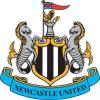
Revell A350-900 1/144 'Skyteam' Vietnam Airlines
phil1 posted a topic in Work in Progress - Aircraft
Revell A350-900 1/144 'Skyteam' Vietnam Airlines On first impressions I thought this was quite an ugly aircraft but having seen it recently at Miami airport in Qatar airways colours I was quite surprised to see how elegant an aircraft it actually is. It's size is also quite deceiving especially in comparison to similar widebodies. Anyway I decided to buy the kit by Revell. It's a typical Revell kit, a lot cruder than zvezda with quite a lot of excess plastic clinging to numerous parts but nevertheless nicely detailed. One wing is warped which is nice so I've had to deal with that before i do anything by heating the plastic and laying some weight on it overnight. The kit comes with Lufthansa colours which i noted that all Lufthansa a350s have a SATCOM (or wifi not sure) antenna but the kit does not come with one Braz sell a few antenna's but knowing which one is a bit of a nightmare. Braz sell the 'SatCom CNA-2102 Antenna' for widebody airliners but it doesn't look right on reference shots of the A350. Does anyone know which type of antenna the A350 uses?? (placed near the tail) the obvious choice would be to make one but I rather find out if Braz do one for the sake of perfection. Progress and pics to follow..... -
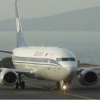
Black Ponies OV-10A Bronco - Academy 1/72
Dennis_C posted a topic in Ready for Inspection - Aircraft
Hi Everyone, I’ve not been posting completed models for a while although I managed to complete a bunch over the last year. Starting to catch up now. The first one is OV-10A Bronco in Vietnam markings of VAL-4. I have a mixed feeling about the kit and about the effort I did to get it completed. The kit can be assembled out of the box with moderate effort (only sponson to nacelle fit is really poor) and will definitely result in a decent model that would 100% look like a Bronco (it’s probably impossible to do a Bronco kit that would not look like a Bronco). But that works only until you see Bronco photos… Below is the list of errors and omissions I was able to find and tried to fix: - Empty undercarriage bays. Front bay is also almost empty on a real thing – reverse side of a landing light and some wiring only. Main bays have engine covers inside (Academy kit represents an aircraft as if its engines are removed), a lot of wiring, hydraulics, etc. I tried to scratchbuild at least engine covers and added some wiring. - Too small and simplified engine nacelles in particular anemic intakes over propellers should be noted. I tried to enlarge those with plastic and putty and drilled intakes through. - Wrong weapons sponson. In real life machine guns are placed asymmetrically, while kit has completely symmetric sponson. I tried to fix this. Also sponson shape is incorrect being a little narrower and with wrong angle of the front edge. - Short wing and short tail booms. Some reviewers also wrote about wrong wing angle of attack which I was not able to measure but seems to be true as well. Wing span is around 8 mm (!) shorter. Mostly outside of booms so easier to fix. Tail booms are approximately 3 mm shorter. The above is per my matching to real thing photoes. Tails are sitting at right height which leads to wrong angle on booms upper side which is more pronounced on a kit compared to real thing. I did not do anything about it as fixing booms represents pretty strong surgery and lengthening wing without adjustment of booms would result in even greater proportions distortion. - Simplified undercarriage. Some enhancement was done by replacement of plastic parts with metal tubes. Given the weight of lead I had to hide into nacelle to avoid tail-sitting – not sure if original plastic undercarriage would survive at all. My metal gear only marginally carries the weight. - Wrong shaped wing pylons. The kit ones are shorter and place rockets at wrong angle to the wing. Fixed it. - Fuel tank has the wrong shape. The thing is too pointy. I only identified it when starting to apply decals so live with it as is. - Cockpit details OOB are heavily simplified – here I just used CMK interior set. - Inconsistently applied panel lines. Academy did pretty decent panel lines on the wings (however they marked wing walkways with panel lines which is wrong). However, Academy ignored panel lines on the nacelle and sponson. Even cargo door is not properly shown! I tried to reapply missing panel lines to the possible extent. Some other non-OOB additions included Zunies from Crusader kit, LAU-10 launchers from Hasegawa weapon set (kit have extremely tiny Zuni warheads), LAU-32 launchers from Italeri OH-6 kit, CMK interior resin, Eduard PE set (which I only barely used to do some external features), and an excellent AOA decal which actually inspired me to buy and assemble the whole thing. Not much of a background story of the chosen subject as VAL-4 history is very well known. AOA provides almost 20 different options and I selected specific aircraft because of unique spinners colour which is said to be golden per AOA instruction. Overall conclusion – quite a lot of effort done to improve the kit but I know I went only half the distance to make a fully correct copy of a true thing. Also this is the subject that desperately needs a new 1/72 kit which would be of the correct geometrical shape as a minimum and would maybe provide a better level of details in the cockpit, undercarriage. And on top of it a wider choice of loadout other than standard LAU-3/10 and Mk.82 as Broncos carried almost everything what was available in Vietnam. Hope you enjoyed A great modelling year to everyone! Dennis- 14 replies
-
- 25
-

-
Hi all, In a fit of madness I decided to build four 1/48 Phantoms at the same time. Here's the first: Hasegawa's 1/48 F-4E from a 2001 boxing in the kit decals. Paint is Mr Color and applied freehand. The seats and pylons are True Details resin. The engine exhausts are from an Academy F-4. A full description is written up here: https://jonbryon.com/hasegawa-1-48-mcdonnell-douglas-f-4e-phantom-ii/ Comments welcome and thanks for looking. Jon
- 34 replies
-
- 69
-

-

-
- Vietnam
- sharkmouth
-
(and 1 more)
Tagged with:
-
I know that U.S. carrier deck colours reverted to grey from blue on the cessation of World War 2 but I'm not certain which grey. I have plans to build an Essex class carrier converted to the LPH role. As helicopter carriers they did not get the angled or steel flight deck upgrades of other CV- types so would like to find out which colour these wooden decked carriers would have been painted postwar. There are two periods that I am interested in; a pre-LPH helicopter carrier (i.e. still had CV- allocation) of the Korean war era 1950-1952; and LPH helicopter carrier of the Vietnam war era around 1960-1965. Were these decks painted different greys for each of these periods, if so, does anyone know which one's? If they remained the same grey, which colour was it? Grateful for any, and as much, information as possible please, for build project. Thanks Mike
- 10 replies
-
- Essex class
- LPH
-
(and 2 more)
Tagged with:


